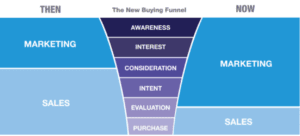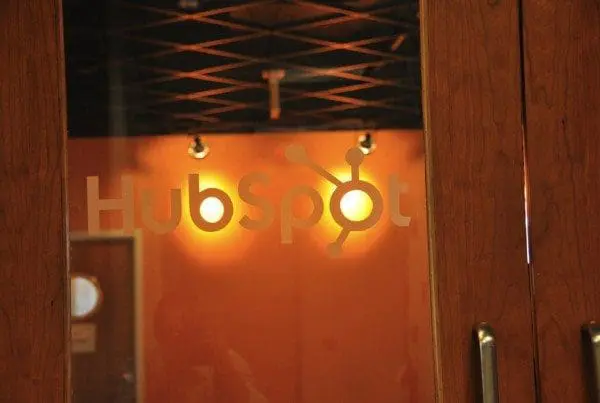This blog post is part of “The Ultimate Guide to Lead Generation” blog series.
Sales and marketing teams in many companies are locked into a kind of cold war–sales doesn’t think marketing hosts swanky events and spends big bucks on creative campaigns; while marketing thinks salespeople are over compensated and all about themselves.
It doesn’t have to be this way. In fact, it can’t be this way if a company is to succeed in today’s economy. Marketing and sales can and must work together to optimize lead generation and revenue flow and one team can’t do it without the other. Here’s why:
Marketing Owns the Top of the Sales Funnel
The Internet has changed marketing, sales and the relationship between the two. Some 90+ percent of buyers research online before contacting a salesperson at a company, conducting up to 12 searches, according to Google. Marketing’s job is to create the web technology and content that engages searchers in this process and fill the top of the funnel with people that are interested in a company’s product or technology.

Source: Marketo
Marketing Owns the Middle of the Funnel Too
Contacting people that have just expressed interest in a company or its product is a waste of a salesperson’s time. So marketing must also be responsible for identifying and qualifying the middle of the funnel–people that are experiencing the problem or need that your company addresses. Ideally, this process includes identifying what makes a lead “sales qualified,” and defining a point at which to handoff a lead from marketing to sales.
Automation Makes it Easier
Marketing automation platforms (HubSpot, Marketo, SharpSpring) make it easy to automate this lead generation and qualification process. You can use these platforms to optimize your web content around the search terms your prospects use, create web pages that engage them and help them explore solutions and content offers that help you understand where people are in the buying cycle. Marketing automation also allows you to score and segment leads based on how they interact with your company. This scoring and segmentation can be used to establish criteria that qualify a lead for a sales follow-up.
Work Together on the Bottom of the Funnel
The bottom of the funnel is where sales and marketing can and must work together. Both teams must agree on what criteria must be met before a lead should be handed off to sales. Usually, salespeople will be thrilled to be asked to participate in this effort. After all, their livelihoods depend on converting leads to customers, and they want as many qualified leads as they can handle. If marketing and sales agree on when a lead is “sales qualified” and should be routed to the appropriate sales person, it can remove a great deal of friction between sales and marketing, and friction in the conversion from lead to customer.
A Time for Peace
It’s time to end the sales-marketing cold war. Both teams need each other. Marketing needs sales’ help to get lead generation right. There just isn’t any other way to describe it. Without that street-level understanding of what salespeople are looking for in leads, marketing will not be able to prove a measurable contribution to the bottom line. And if sales teams don’t help marketing get the funnel filling program right, sales won’t make their numbers.
This blog post is part of “The Ultimate Guide to Lead Generation” blog series.




